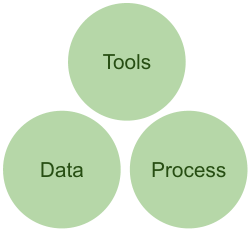 When a startup begins acquiring customers, it feels pretty magical. Once the sale is closed, there might be a few manual processes in place, like writing down some detailed information about the customer, setting up the product for them and configuring automatic billing. What happens when we have 100 customers? Suddenly, we have a massive influx of new data to track. Is each customer getting billed properly? Do we know who the customer’s key contacts are so we don’t accidentally send them future marketing emails?
When a startup begins acquiring customers, it feels pretty magical. Once the sale is closed, there might be a few manual processes in place, like writing down some detailed information about the customer, setting up the product for them and configuring automatic billing. What happens when we have 100 customers? Suddenly, we have a massive influx of new data to track. Is each customer getting billed properly? Do we know who the customer’s key contacts are so we don’t accidentally send them future marketing emails?
These challenges are precisely why a growing startup requires some basic business infrastructure: systems, processes and tools that enable us to do the important stuff (sales, marketing, product, etc) seamlessly. Most companies refer to this team as Business Systems or Business Operations. There are 3 simple goals for that team:
- Launch and maintain internal tools
- Ensure visible internal data
- Create scalable processes
Let’s break down each of these goals:
Launch and Maintain Internal Tools
In the early days, it’s easy to manage all of the small SaaS tools we use ad-hoc. However, when we grow the team is interacting with multiple interconnected systems, like a CRM, marketing automation, support ticketing, billing, bug tracking and more. We need an expert who is focused on configuring, customizing and maintaining each of these tools to ensure they continue to work well for the team. Business Systems should:
- Research and understand the variety of internal tools that we use
- Analyze how systems (e.g. our CRM) are used and implement efficiencies
- Launch new systems (e.g. new SaaS billing software)
- Spec integrations between systems and define API integrations
- Manage technical projects to connect systems together
- Create training material to ensure team successfully uses systems
Ensure Visible Data
Consider how stressful it might be if a startup has been operating for a year and because we didn’t keep good track of our data, we can’t run reports to understand the demographics of our customers, the probability we will keep them next year, and what the best next steps are for our business? Getting data strategy right is hard, so it’s important that startup teams invest early in the organization and expertise needed to avoid future messes.
If the company is acquiring customers quickly, we need a world-class strategy for effectively collecting, cleaning, storing, and reporting on this mountain of data. Since the data can come from multiple access points (partners, customers, sales reps), we must account for the complexity of handling that data so we can leverage it to power our KPI dashboards and drive business intelligence. Business Systems should:
- Ensure that new customer data is clean and properly formatted
- Support the sales team in effectively capturing data when a deal closes
- Resolve data issues (duplicates, inconsistencies)
- Define relevant KPIs for each functional area
- Build effective and visible dashboards with key metrics
- Support Accounting to ensure data consistency for billing accuracy
Create Scalable Processes
When teams grow and need to work in alignment (i.e. sales, marketing and customer success) it can be challenging to have processes that span across multiple functions. For example, we need to make sure that the sales team collects the right information from new customers that will enable the customer success team to jump in quickly post-sale to get the customer launched.
We need a cross-functional party to understand how each of these groups will work together, share resources and standardize data. This is a continuous internal consultation that we perform on ourselves to ensure our “machinery” is operating at peak efficiency. Business Systems should:
- Evaluate each department’s repeatable processes and document them
- Suggest and implement process improvements
- Ensure that processes align with our internal systems and data strategy
- Identify risks in our internal processes that could lead to growth pains
Invest Early
Much of what I describe above may sound like “big company problems.” I assure you that these are highly applicable to startups, and the most savvy operators invest in business systems before the problems begin (i.e. less than 10 people). Getting the right internal toolset, data management strategy and scalable processes are vital to avoiding the loathed “growing pains” that so many startups endure.
As we are building our business systems, we must be very careful. Once in use, they are painful and expensive to rip out. We must consider how long we can use each tool, process and strategy before we outgrow it. An 12-24 month outlook is typically a good target. For an early stage startup, that might mean “what tools and systems do we need to get from seed to a growing series A?”